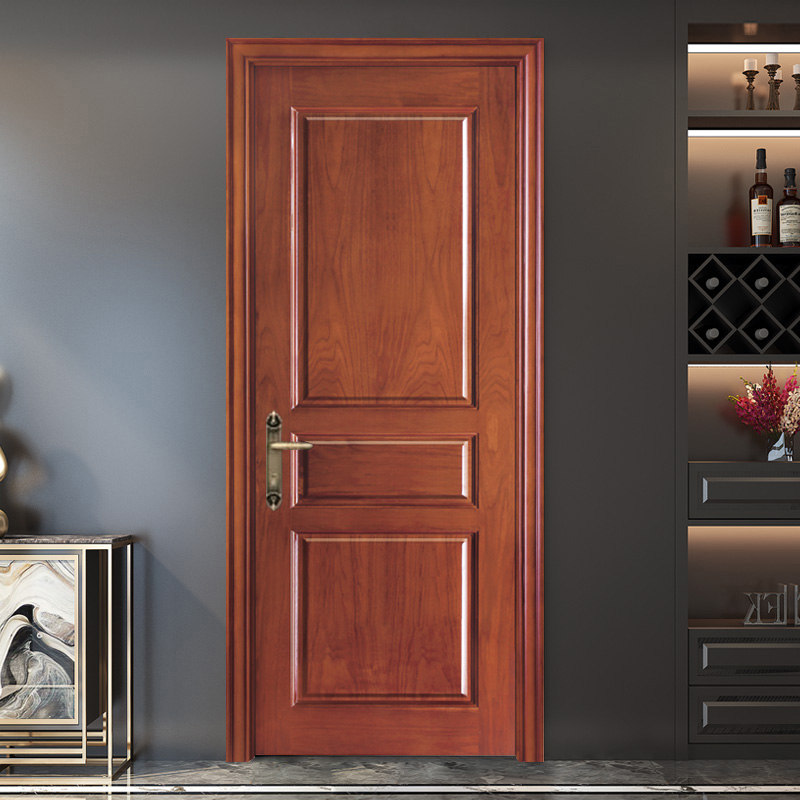Product Consultation
Your email address will not be published. Required fields are marked *

How does the surface finish of the Melamine Laminated Wooden Door resist scratches, stains?
Apr 22,2025
How does a Glass Wooden Door contribute to the overall energy efficiency of a building?
Apr 14,2025
How resistant is the PVC coating on a PVC MDF door to scratches, stains, and fading over time?
Apr 07,2025
Solid wood doors resist warping, twisting, or cracking primarily due to the natural properties of wood and proper construction techniques. Here's how they typically achieve this:
Wood Selection: Solid wood doors are typically crafted from dense, stable wood species renowned for their structural integrity and aesthetic appeal. Woods such as oak, mahogany, maple, and cherry are favored for their tight grain patterns and natural resistance to moisture absorption. These characteristics minimize the wood's tendency to expand or contract excessively in response to changes in humidity and temperature, reducing the risk of warping or twisting.
Proper Drying and Seasoning: Before manufacturing, the wood undergoes a meticulous drying process known as seasoning. This process involves slowly and carefully reducing the moisture content of the wood to an optimal level, typically between 6-8%. Properly seasoned wood is more stable and less prone to shrinkage or expansion, which can lead to warping or cracking over time. Seasoning also enhances the wood's strength and durability, ensuring it can withstand the stresses of everyday use and varying environmental conditions.
Construction Techniques: Solid wood doors are constructed using advanced techniques that prioritize stability and longevity. The frame of the door, comprising stiles (vertical elements) and rails (horizontal elements), is often engineered to be thicker and more robust. These components may feature laminated construction or be reinforced with internal dowels to enhance strength and minimize the risk of warping or twisting. Precision joinery methods such as mortise-and-tenon joints ensure strong, durable connections that withstand the test of time.
Panel Design: Central to the design of solid wood doors is the construction of the panels within the door frame. Panels are designed to "float" within the frame, meaning they are loosely fitted to allow for natural expansion and contraction of the wood with changes in humidity. This floating panel design prevents the panels from exerting undue pressure on the door structure, thereby minimizing the risk of warping or cracking. Additionally, panels may be designed with a slight bevel or relief cut on the edges to further accommodate movement and ensure a snug fit without compromising structural integrity.
Sealing and Finishing: The surface of a solid wood door is meticulously sealed and finished to protect the wood from moisture infiltration and environmental factors that could contribute to warping or cracking. High-quality finishes such as polyurethane, varnish, or penetrating oils create a protective barrier that seals the wood fibers while enhancing its natural beauty. Proper sealing and finishing not only safeguard against moisture absorption but also maintain the dimensional stability of the wood, ensuring the door retains its shape and integrity over time.
Climate-Specific Adaptation: Manufacturers may tailor the design and construction of solid wood doors to specific climate conditions to further enhance their resistance to warping, twisting, or cracking. In regions with high humidity or significant temperature fluctuations, doors may incorporate additional design features such as thicker panels or strategic reinforcements in critical areas. These adaptations help mitigate the effects of environmental changes on the door's dimensional stability and structural integrity, ensuring reliable performance and longevity.
GA-72 Light Grey PU-Paint Interior Woom Wooden Door

Your email address will not be published. Required fields are marked *











